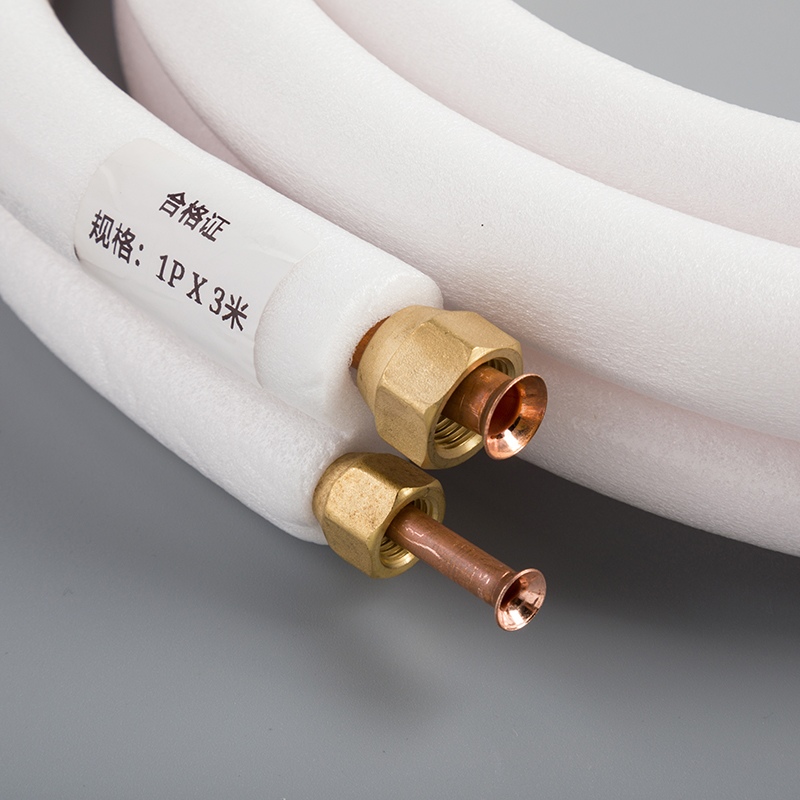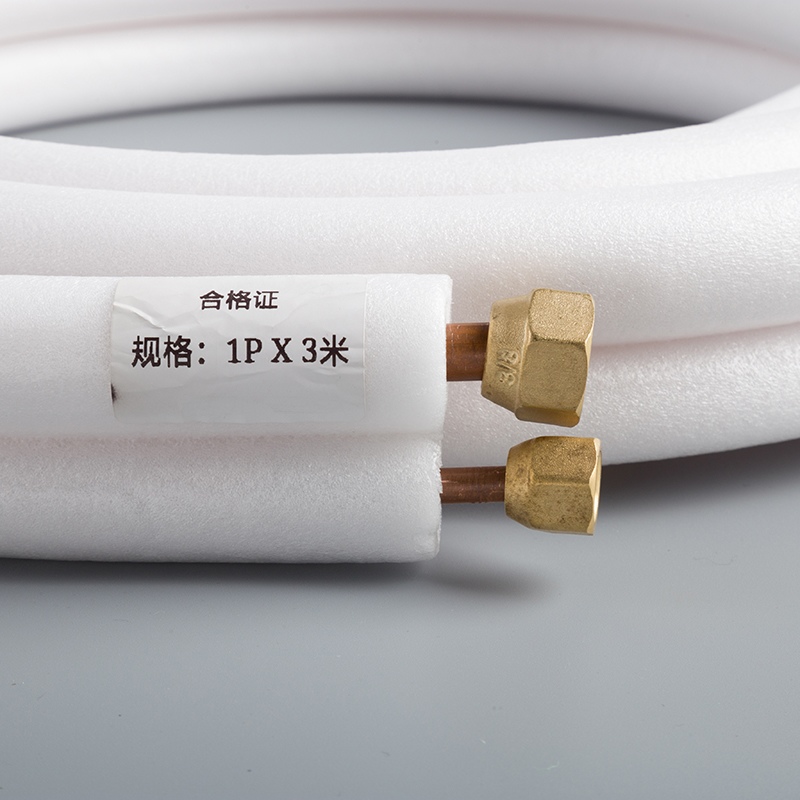Comparing Air Conditioning Copper Pipe Types

Selecting the appropriate copper pipe for air conditioning systems is crucial. Understanding the various copper pipe types used in air conditioning is essential for making informed decisions. This blog aims to write a Comparison blog post on Comparing Different Types of Air Conditioning Copper Pipes, providing readers with valuable insights to guide their choices effectively.
Basics of Copper Pipes in Air Conditioning

Why Copper is Preferred
Durability and Longevity
Copper pipes stand out for their exceptional durability and longevity. They have a remarkable ability to withstand harsh conditions, ensuring a long lifespan for air conditioning systems.
Thermal Conductivity
Copper, known for its superior thermal conductivity, plays a vital role in air conditioning efficiency. Its high heat transfer rate allows for quick cooling, contributing to energy savings and optimal performance.
Corrosion Resistance
Copper pipes excel in resisting corrosion, making them a reliable choice for air conditioning applications. This resistance ensures that the pipes maintain their integrity over time, preventing leaks and system malfunctions.
General Types of Copper Pipes
Soft Copper Pipes
Soft copper pipes offer flexibility and ease of installation in various air conditioning setups. Their malleability allows for bending around tight corners without compromising the pipe's structural integrity.
Hard Copper Pipes
Hard copper pipes provide added strength and rigidity, ideal for applications requiring more robust piping solutions. Their durability makes them suitable for installations where protection against physical damage is crucial.
Detailed Comparison of Copper Pipe Types

Type K Copper Pipes
Characteristics
Type K copper pipes are known for their exceptional durability and strength, making them the top choice for demanding applications.
These pipes have the thickest walls among the copper pipe types, ensuring robustness and reliability in various air conditioning systems.
The thickness of Type K pipes enhances their resistance to high pressure and external damage, providing long-term performance benefits.
Applications
Type K copper pipes find extensive use in critical installations where durability is paramount, such as underground applications and industrial settings.
They are commonly employed in projects requiring a high level of structural integrity and longevity, ensuring reliable operation over extended periods.
Due to their superior strength characteristics, Type K pipes are ideal for heavy-duty air conditioning systems that demand exceptional performance.
Pros and Cons
Pros:
Exceptional durability and longevity in demanding environments.
High resistance to pressure variations and external forces.
Ideal for critical applications where reliability is crucial.
Cons:
Higher initial cost compared to other copper pipe types.
More challenging to work with due to thicker walls during installation.
Type L Copper Pipes
Characteristics
Type L copper pipes strike a balance between strength and affordability, offering a versatile solution for various air conditioning requirements.
With medium wall thickness, these pipes provide adequate durability while being more cost-effective than Type K alternatives.
The versatility of Type L pipes makes them suitable for both residential and light commercial air conditioning systems.
Applications
Type L copper tubing is commonly used in interior water supply systems due to its reliable performance and moderate cost.
These pipes are preferred for projects where a balance between quality and budget is essential, ensuring efficient cooling without compromising on durability.
The flexibility of Type L pipes allows for easy installation in diverse air conditioning setups, making them a popular choice among homeowners.
Pros and Cons
Pros:
Balanced strength and affordability for cost-effective solutions.
Versatile applications in residential and light commercial settings.
Easy installation process compared to Type K counterparts.
Cons:
Lower pressure rating than Type K pipes, limiting use in high-pressure environments.
Moderate corrosion resistance may require additional maintenance measures.
Type M Copper Pipes
Characteristics
Type M copper pipes are recognized for their lightweight construction, offering an economical option for air conditioning projects with budget constraints.
These pipes feature thinner walls compared to other types, providing flexibility and ease of handling during installation processes.
Despite their lighter build, Type M tubes maintain sufficient strength for typical domestic cooling applications.
Applications
Type M copper piping is widely used in scenarios where cost efficiency is a primary consideration without compromising basic performance requirements.
They are suitable for light domestic water lines or underground installations where lower pressure conditions prevail consistently.
The affordability of Type M pipes makes them an attractive choice for homeowners seeking reliable cooling solutions within budget constraints.
Pros and Cons
Pros:
Economical option for budget-conscious projects without sacrificing quality performance standards.
Lightweight design facilitates easier handling during installation processes.
Cons:
Thinner walls may limit use in high-pressure environments or industrial applications requiring enhanced durability measures.
Factors to Consider When Choosing Copper Pipes
Application Requirements
Residential vs. Commercial Use
Residential Use:
For residential applications, Type L copper pipes offer a balanced solution between durability and cost-effectiveness.
These pipes are commonly used in homes for air conditioning systems due to their reliable performance and moderate pricing.
The versatility of Type L pipes caters well to the cooling needs of households, ensuring efficient operation without compromising quality.
Commercial Use:
In commercial settings, the preference often leans towards Type K copper pipes for their exceptional strength and longevity.
These pipes are ideal for demanding environments where robustness is crucial, providing reliable performance in industrial air conditioning systems.
The durability of Type K pipes makes them a top choice for businesses seeking long-term solutions for their cooling requirements.
Specific System Needs
Specific Cooling Requirements:
Understanding the specific cooling demands of an environment is essential when selecting copper pipes.
Different types like Type K, Type L, or Type M cater to varying needs, from heavy-duty industrial setups to light domestic applications.
Tailoring the choice of copper pipe type based on the system's unique requirements ensures optimal performance and longevity.
Cost Considerations
Initial Cost
When considering the initial cost of copper pipes, it's important to weigh the upfront investment against long-term benefits.
While Type K copper pipes may have a higher initial price tag, their durability and reliability can result in cost savings over time.
Type M copper pipes, with their economical design, provide budget-friendly options without compromising basic cooling functionalities.
Long-term Value
Evaluating the long-term value of copper pipes involves looking beyond immediate expenses to consider overall system efficiency.
Opting for durable options like Type K or Type L copper pipes can translate into reduced maintenance costs and enhanced system longevity.
Investing in high-quality copper piping ensures sustained performance and operational efficiency over the years.
Installation and Maintenance
Ease of Installation
Simplifying installation processes is crucial when choosing copper pipes for air conditioning systems.
Type L copper tubing, known for its flexibility and ease of handling, streamlines installation procedures in various setups.
Ensuring smooth installation not only saves time but also minimizes potential disruptions during system setup.
Maintenance Requirements
Addressing maintenance needs is vital to uphold the integrity and efficiency of air conditioning systems using copper piping.
Regular inspections and upkeep routines help prevent issues such as corrosion or leaks that could impact system performance.
Following manufacturer guidelines for maintenance ensures prolonged functionality and optimal cooling output.
In summarizing the comparison of copper pipe types for air conditioning systems, it's evident that each type offers unique benefits and considerations. Choosing the right copper pipe is crucial for ensuring long-term efficiency and performance. While Type K pipes excel in durability and strength for demanding applications, Type L pipes strike a balance between reliability and cost-effectiveness, making them ideal for residential use. For those seeking economical options without compromising quality, Type M pipes provide a lightweight solution. Consulting with professionals can help tailor choices to specific needs, ensuring optimal cooling solutions.
See Also
Benefits of Opting for Copper Tubing in Aircon Systems
The Impact of Pure Copper Piping on Aircon Innovation
Uncovering Performance: Copper vs. Aluminum Piping in Aircon
The Essential Role of Pure Copper Tubing in Aircon Efficiency


